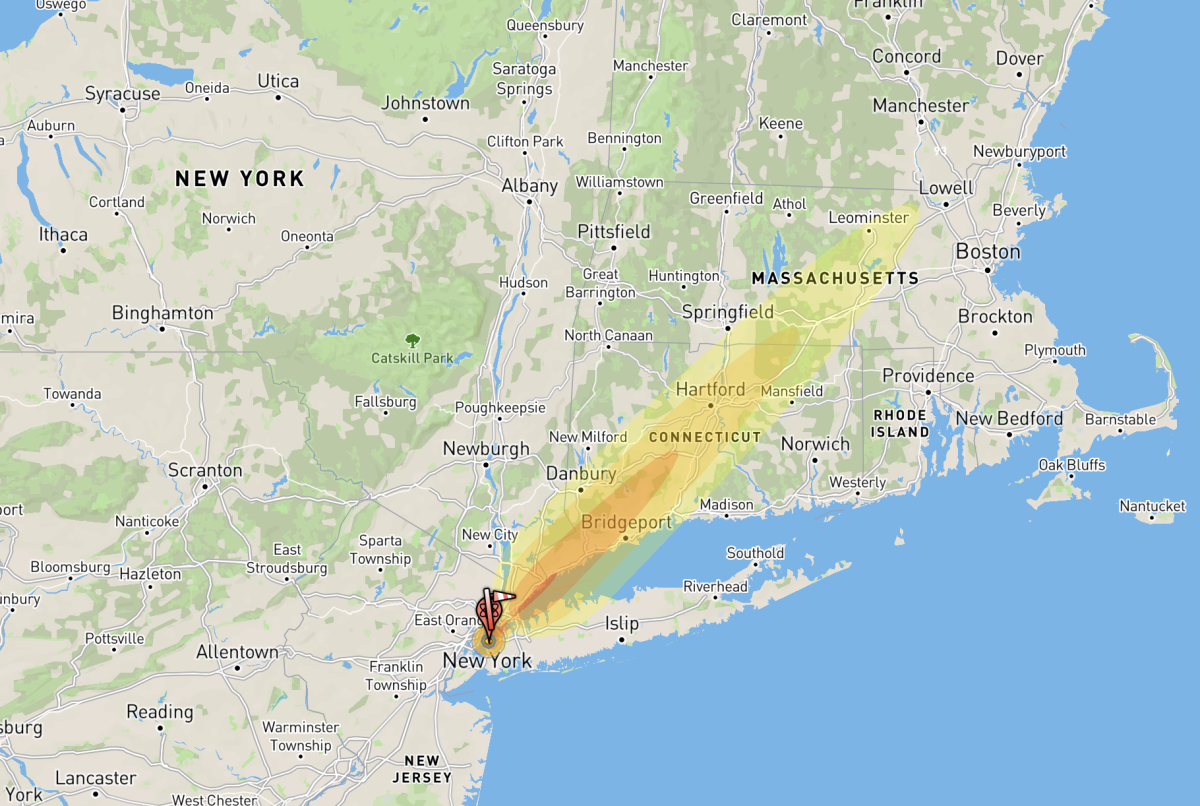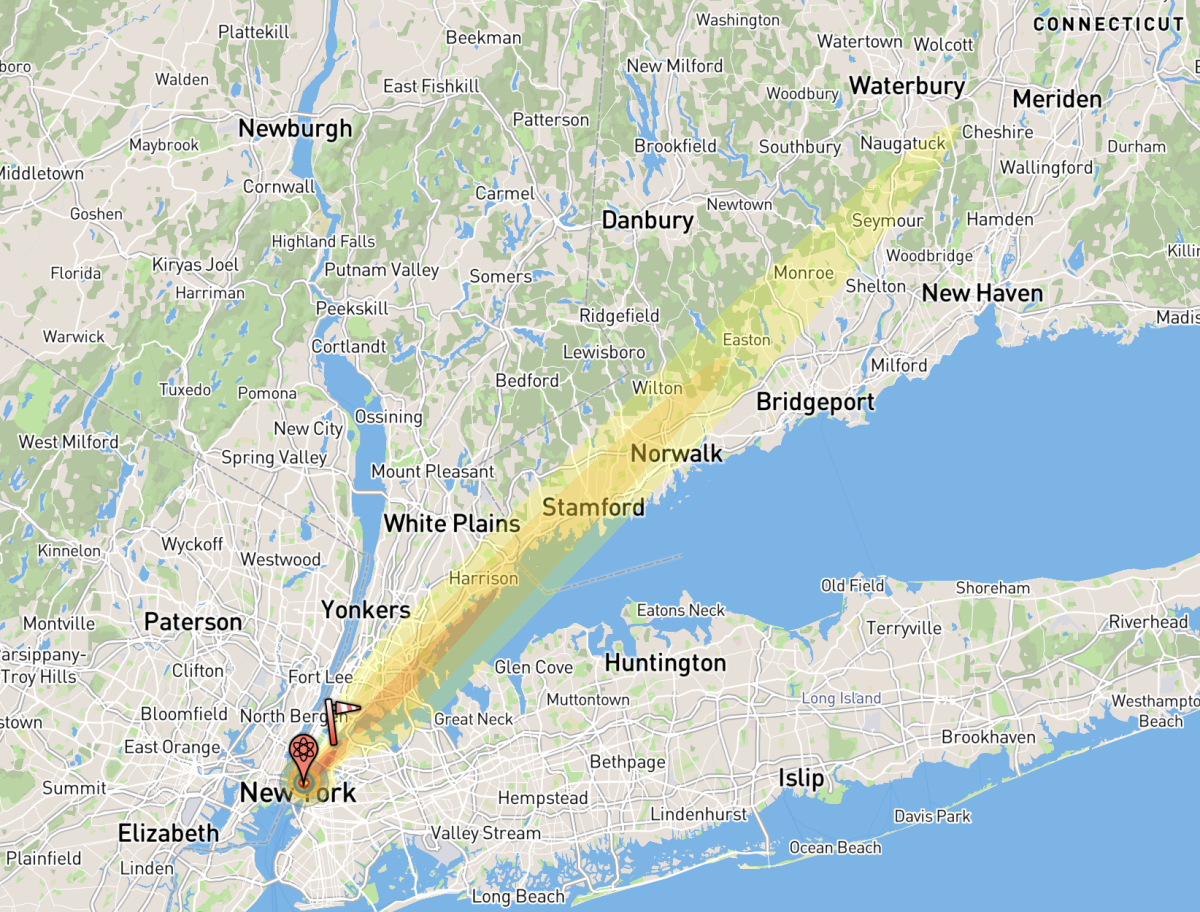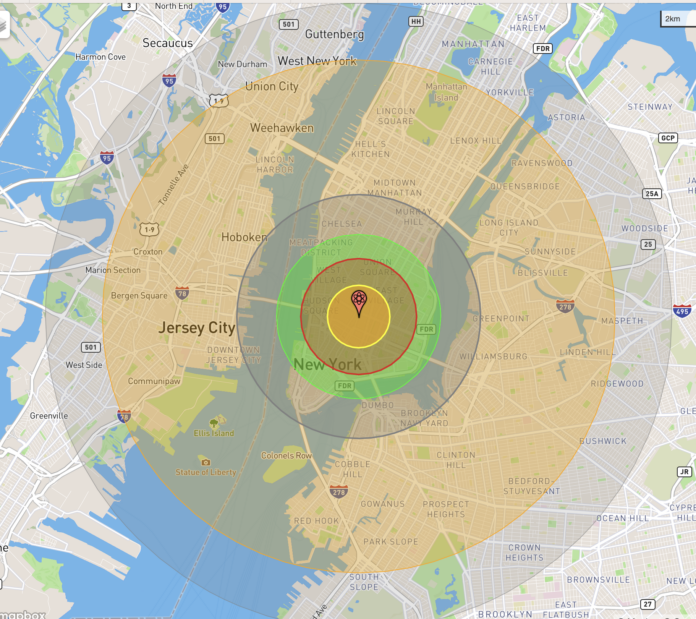The B61-13 nuclear gravity bomb, a new variant being developed under the administration of President Joe Biden, is far more powerful than the only two atomic bombs used in war.
The Pentagon announced last week that it was working on the B61-13, the latest in a line of nuclear weapons that were first produced in the 1960s, at the height of the Cold War.
The Biden administration says the new variant will “strengthen deterrence of adversaries and assurance of allies” by giving the president “additional options against certain harder and large-area military targets.”
The B61-13 is expected to have an explosive yield similar to an older variant, the B61-7, which had a yield equivalent to 360 kilotons of TNT. In comparison, the two bombs that the U.S. dropped on Japan during World War II were significantly less powerful.
Lambert
The bomb dropped on Hiroshima, “Little Boy,” had an explosive yield of 15 kilotons. The B61-13, assuming it has the same yield as the B61-7, is roughly 24 times more powerful. It is around 17 times more powerful than the bomb that the bomb that hit Nagasaki, “Fat Man,” which had an explosive yield of 21 kilotons.
A visualization of a hypothetical B61-3 explosion over New York City—created using Nukemap, an online tool created by historian of science and nuclear technology Alex Wellerstein—shows that the new bomb, at maximum yield, would destroy a huge chunk of Manhattan and cause massive destruction miles away.
A fireball would vaporize people and buildings within a half-mile radius, while heavy damage would demolish buildings and likely kill everyone else within a mile. Building collapses, fires and widespread fatalities would be seen two miles out, while radiation would result in severe burns for several more miles. Additional radiation-related deaths would likely occur in the larger region.

Map data © OpenStreetMap contributors, CC-BY-SA, Imagery © Mapbox./NUKEMAP/Alex Wellerstein
Another visualization of the hypothetical blast shows a radioactive plume extending over New England, as far as northern Massachusetts. The simulation estimates that over 778,000 people would be killed and over 1 million injured by the bomb, demonstrating the ability of the B61-13 to wreak havoc on a densely populated area.

Map data © OpenStreetMap contributors, CC-BY-SA, Imagery © Mapbox./NUKEMAP/Alex Wellerstein
The actual detonation of the Hiroshima bomb “Little Boy” resulted in an estimated death toll of 70,000 to 140,000, according to The Bulletin of the Atomic Scientists. “Fat Man,” the Nagasaki bomb, despite having a higher explosive yield, killed an estimated 40,000 to 70,000 more people.
The reduced casualty count in Nagasaki is explained by the damage being mitigated to some degree by the hilly terrain of the city when compared to the relatively flat terrain of Hiroshima. Nagasaki also had a smaller population than Hiroshima.
Maps of the Hiroshima and Nagasaki bombs exploding over New York were created to more accurately compare the power of the blasts to the B61-13, showing that they would also cause mass destruction, albeit at a smaller scale.
Visualizations of the Nagasaki bomb exploding in New York show that about eight city blocks in Manhattan would be entirely vaporized in a fireball. Heavy to moderate damage would occur in a radius of .78 miles, while lighter damage would be seen as far as two miles out.

Map data © OpenStreetMap contributors, CC-BY-SA, Imagery © Mapbox./NUKEMAP/Alex Wellerstein
“Fat Man” would cause radiation burns within a radius of at least 1.2 miles, while its radioactive plum would extend to Waterbury, Connecticut, assuming wind took the fallout northeast. The estimated death toll would be over 164,000 with over 300,000 injuries.

MAP DATA © OPENSTREETMAP CONTRIBUTORS, CC-BY-SA, IMAGERY © MAPBOX/NUKEMAP/Alex Wellerstein
A map showing “Little Boy,” the Hiroshima bomb, reveals that it would leave a similar trail of destruction. However, it would cause slightly less damage than “Fat Man” when hitting the same target. About seven city blocks would be vaporized, with heavy to moderate damage occurring in a radius of .7 miles.
Radiation burns from “Little Boy” would occur within a radius of 1 mile, while its radioactive plume would make it almost as far as the hypothetical plume caused by “Fat Man.” The estimated death toll of the Hiroshima bomb dropping on New York would be over 133,000, with around 255,000 injuries.

MAP DATA © OPENSTREETMAP CONTRIBUTORS, CC-BY-SA, IMAGERY © MAPBOX/NUKEMAP/Alex Wellerstein
While the B61-13 has the potential to cause significantly more destruction than the World War II bombs, it is far less powerful than the bomb with the largest yield in the current U.S. stockpile, the 1.2-megaton B83-1, which has been slated for retirement since last year.
The Federation of American Scientists (FAS), a group dedicated to reducing nuclear weapons, called the B61-13 “a political nuclear bomb.”
In a report published just after the announcement of the bomb, the group argued that the development was likely “a political maneuver to finally get rid of the B83-1” and that “the military doesn’t need an additional, more powerful gravity bomb.”
Newsweek reached out for additional comment to FAS via email on Friday.
According to the Biden administration, the B61-13 will not increase the total number of nuclear weapons in the U.S. stockpile. It will instead replace some units of another newer model that is currently in production, the B61-12.
At 50 kilotons, the B61-12 explosive yield is much more powerful than the World War II bombs but has a far smaller yield than its successor. The B61-12 also added the feature of a tail kit, which provides guided navigation and improves the accuracy of the weapon. The same feature is included in the B61-13.
Uncommon Knowledge
Newsweek is committed to challenging conventional wisdom and finding connections in the search for common ground.
Newsweek is committed to challenging conventional wisdom and finding connections in the search for common ground.


